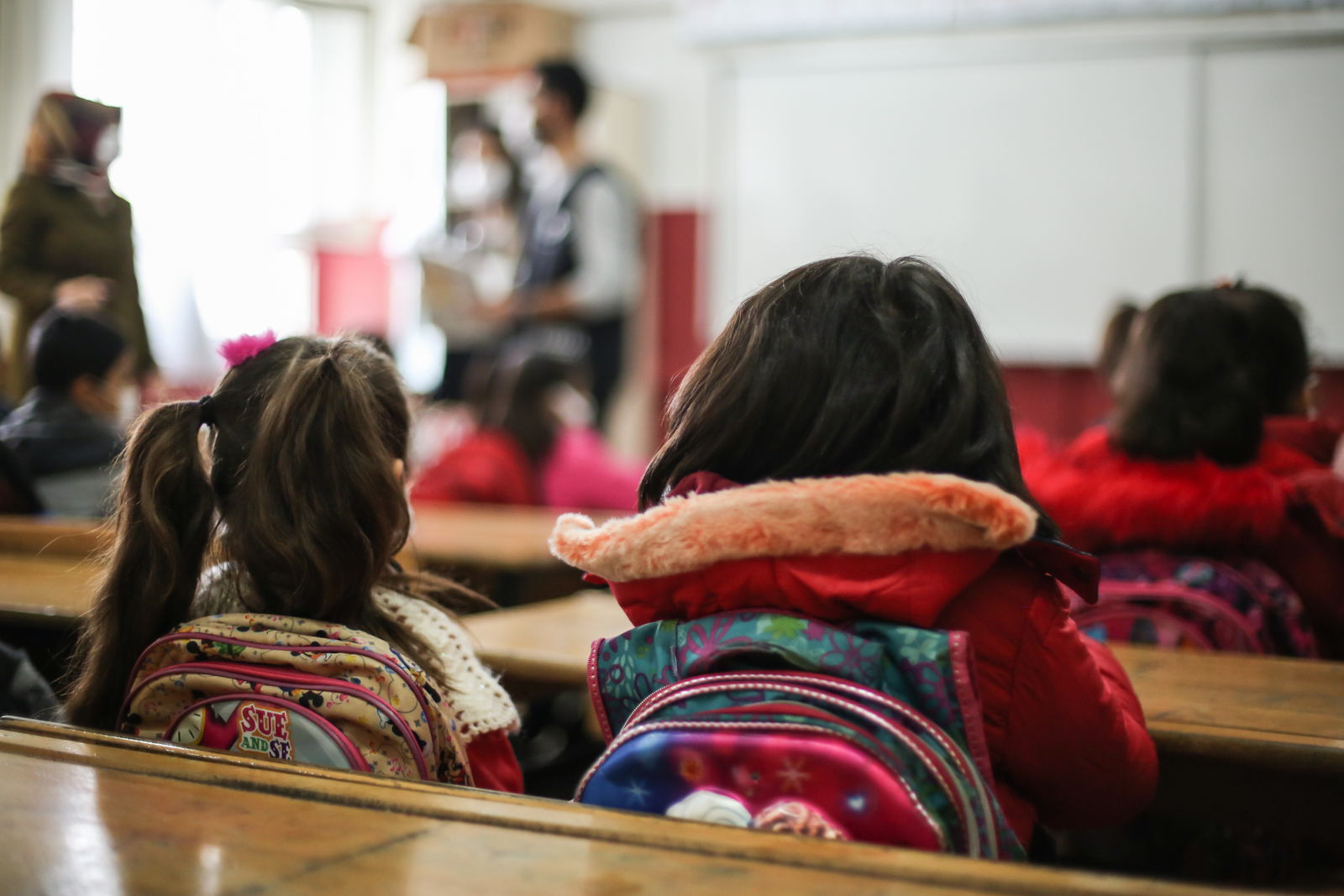
Education and Gender
Reading up for your women’s studies class? Examining the relationship between gender, power, and socioeconomic class? Penning an essay on the intersection of feminism and development? This page will outline the intimate relationship between education and gender equality.
In many countries and communities, girls are often discriminated against and the most vulnerable face multiple barriers to education, ranging from child marriage and child labour to sexual exploitation and trafficking. And while there is rightfully a focus on girls’ education, boys – particularly from disadvantaged backgrounds – are often not encouraged to complete their education and can be vulnerable to child labour, violence, gangs or extremism. Investing in relevant and quality education for girls and boys creates more equal and tolerant societies, breaking the cycle of poverty and creating a healthier, wealthier and more educated family.
Looking for questions to centre your research efforts or interesting issues or problems to explore? These research questions can help provide a path to a focused research and writing process.
- What are the benefits of investing in girls’ education?
- What are the costs and consequences of not investing in girls’ education?
- What is the relationship between education and child marriage?
- Why should we invest in boys’ education when girls are more marginalised?
- How does girls’ education improve health outcomes?
- How does girls’ education affect economic growth?
- What is the relationship between boys’ education and gender-based violence?
- How does boys’ education impact gender-equitable attitudes?
- Do disparities exist in terms of who is able to access technology or digital platforms?
- How has technology been used successfully to provide quality education?
- Can technology help to democratise education?
- If children can’t go to school full time, is it worth bothering with alternative forms of education?
Looking for clear topic sentences to express your opinion, or thesis statements to serve as the core of your essay? Theirworld’s examples can help to form the base of your argument.
Girls’ education
- Educating girls saves countries money
- Each additional year that a girl is in school increases earnings, promotes economic growth, leads to healthier families, and lowers the rate of child marriage
- The failure to educate girls costs countries a staggering amount in lost lifetime productivity and earnings
- The impact of education on poverty reduction is particularly significant for girls and women
Boys’ education
- Men with higher educational attainment have more gender-equitable attitudes, are better partners, and are less likely to engage in gender-based violence
- Harmful social and gender norms can be shifted through school-based educational interventions for boys
- Quality education for boys creates more tolerant societies
Child marriage
- The level of education a girl attains is the strongest predictor of the age at which she will marry
- Providing universal secondary education would have the single biggest impact on ending child marriage
Health
- Quality education, especially for girls, has transformative impacts on the health of individuals and their children
- Educating girls saves lives
Seeking key messages, facts, and opinions to build your evidence base? Find the most up-to-date, pre-sourced data points to help you make a robust case for education and gender here.
Challenges
Girls’ education
- Millions of girls are out of school. It is estimated that 129 million girls and young women are not in primary or secondary school. (UNICEF, 2022)
- For girls, being out of school increases the risk of child marriage, teen pregnancy, gender-based violence, sexual exploitation, and child labour. During the Ebola outbreak, teen pregnancies in certain parts of Sierra Leone increased by 65%, and child labour by girls increased 19% (UNDP, 2015) (UNICEF, 2021)
- LGBTQ+ youth are at a higher risk of dropping out of school. In Argentina, a study found 45% of transgender students dropped out of school, either due to transphobic bullying by their peers or being excluded by school authorities. (UNESCO, 2012)
- Girls face additional burdens like childcare duties and household chores that detract from their educational opportunities and outcomes. Girls who spend one hour a day fetching water in Nepal are 17% less likely to finish primary school. (Dhital et al., 2021)
- In an increasingly digitised education world, girls often have decreased access to the internet and technology platforms, and have lower ICT skills, reducing their ability to access and benefit from remote learning. (Lindsey, 2020) (Fatehkia et. al., 2018) (Amaro et. al., 2020)
Child marriage
- Less educated girls who marry as children contribute great economic costs to governments. If child marriage was ended and girls were in school, governments could save up to US$17 billion per year by 2030. (World Bank, 2017)
- Girls with no education are up to three times more likely to marry early than those with a secondary education. More than 60% of girls with no education marry before the age of 18. (Girls Not Brides, 2020)
- If efforts to provide universal education and protect girls from child marriage are not accelerated, 950 million girls will be married in childhood by 2030. To eliminate child marriage by 2030, global progress needs to be 12 times faster than the rate over the past decade. (UNICEF, 2014) (UNICEF, 2018)
- Child marriage reduces girls’ expected earnings in adulthood by 9%. The World Bank estimated that lost earnings associated with child marriage for 15 high prevalence countries could reach US$26 billion in 2015. (World Bank, 2017)
- The Covid-19 pandemic jeopardises progress made in reducing child marriage. An estimated 10 million additional girls are at risk of early marriage over the next decade due to the pandemic. School closures have increased the risk of child marriage by 25% per year. (UNICEF, 2021) (UNICEF, 2021)
Equity
- There are large gaps in access to the internet for girls and those living in rural areas. Women are 17% less likely than men to use the internet in the Arab States and Asia and 25% less likely in Africa. (GEM, 2020)
- The gender gap in the digital divide is more pronounced in poorer countries. Girls and women are 23% less likely than boys and men to be able to use mobile internet in low and middle-income countries. (Save the Children, 2020)
- The benefits of education for all will not be fully realised without quality education for all. Great inequities exist in learning and the quality of education provided — even for children with a primary education — with learning outcomes often the lowest for children from disadvantaged backgrounds. In low- and middle-income countries, only 18 of the poorest youth complete secondary school for every 100 of the richest youth. In at least 20 countries, mostly in sub-Saharan Africa, hardly any poor rural young women complete secondary school. (GEM, 2020) (UNICEF, 2015)
- As digital skills become essential for the future of work, the gender gap persists. In the European Union in 2016, only one in six students in information and communications technology (ICT) were female. (ILO, 2020)
- There is a long way to go to fully address the education gap between girls and boys. Just 49% of all countries have achieved gender parity in primary education. (UNICEF, 2022)
- The intersection between gender and poverty in determining digital literacy is especially worrying. In seven low- and lower-middle income countries, fewer than 1% of women in the poorest 60% have spreadsheet skills. (GEM, 2020)
Economic costs
- The cost of not providing education is staggering. Limited educational opportunities and barriers for girls cost the world economy between US$15 trillion and US$30 trillion. In nine countries, the cost of out-of-school children was estimated to be greater than the value of an entire year of GDP growth. (World Bank, 2018) (Thomas & Burnett, 2013)
- Failure to educate girls is costly. Ongoing barriers to girls’ education are costing countries between US$15 trillion to US$30 trillion in lost lifetime productivity and earnings. (World Bank, 2018)
Messages
Health
- Girls who are educated and not married as children are healthier and pass those benefits to their children. Children born to mothers who are not child brides are 60% less likely to die in the first year of their life. (IWHC, 2020)
- Educated men are more likely to be healthier. Young men who had participated in group educational activities were more likely to be tested for HIV, seek medical care, be vaccinated, avoid contracting an STI, and use condoms. (ICRW, 2011) (Parker et al., 2017)
- Better educated mothers have healthier children and families. If all mothers completed secondary school, the likelihood that their children will contract malaria would be 36% lower. (Brookings, 2016)
- Literate mothers have healthier families. When a mother can read, her children are 50% more likely to live past the age of five, twice as likely to attend school, and 50% more likely to be immunized. (Education Cannot Wait, 2019)
- Educating girls saves lives. If all women in India and Nigeria had completed secondary education, the under-five mortality rate would have been 61% lower in India and 42% lower in Nigeria, saving 1.35 million children’s lives. (EFA GMR, 2013)
- Girls’ education saves lives. Around one-third of the reductions in adult mortality and nearly 15% of the reductions in infant mortality from 1970 to 2010 can be attributed to gains in female schooling. (Jamison & Schaferhoff, 2016)
- A marginal increase in education yields tremendous decreases in pneumonia cases, the leading cause of child death worldwide. One additional year of maternal education reduces the pneumonia death rate by 14%, saving 160,000 child lives every year. (EFA GMR, 2014)
- Education is a cost-effective tool for preventing HIV transmission, providing the knowledge to reduce the risk of infection. If all young adults completed primary education, there would be seven million fewer new cases of HIV per decade. Girls out of school are three times more likely to be infected with HIV than those in school. Staying in secondary school can reduce HIV infection rates by as much as 60%. (Malala Fund, 2015) (Grepin & Bharadwaj, 2015) (De Neve et al., 2015)
- Pairing education with complementary health care services in schools increases the benefits a mother’s education transfers to her child. Children in Ethiopia whose mother had attended a primary school coupled with access to antenatal care were 39% less likely to be stunted at the age of one than children with a mother who had attended a primary school with little or no access to antenatal care. (Sabates, 2013)
- Girls’ education is vital to prevent the impaired development and growth that accompanies malnutrition. If all women completed primary education, 1.7 million fewer children would be affected with stunted growth. If all women completed secondary education, this number would rise to 11.9 million. In Bangladesh, the odds of a child being stunted were 54% lower when both parents had a primary education. (EFA GMR, 2014) (Semba et al., 2008)
- Children of educated mothers are better nourished. A mother’s education furthers her child’s nutritional wellbeing, even after taking into account additional factors linked to better nutrition, such as breastfeeding practices, water and sanitation, and household wealth. (EFA GMR, 2014)
- An educated mother is more likely to breastfeed, a key tool in the prevention of malnutrition. Exclusive breastfeeding provides children with all of the nutrition they need for healthy growth and brain development, while providing protection from respiratory infections, and diarrheal disease. It can also help to prevent obesity, and non-communicable diseases like diabetes, later in life. (Heck et al., 2006) (Acharya & Khanal, 2015)
- Education helps to ensure a diverse and healthy diet that includes micronutrients — a vital component to proper nutrition and disease prevention. In Tanzania, children whose mothers had at least a secondary education were twice as likely to consume food rich in micronutrients in comparison to mothers with a primary education or less. Young children lacking key nutrients like vitamin A and iron are more likely to be malnourished and more prone to infections like measles, diarrhoea and anaemia, that affect their cognitive development. (EFA GMR, 2014)
Boys education
- Education creates more equitable and caring partners and fathers. Men who have completed at least some secondary education are more likely to take on a fair share of domestic work and childcare, and take paternity leave. (ICRW., 2011)
- Boys’ education reduces gender-based violence. Better educated boys and young men are less likely to perpetrate physical violence against an intimate partner, and are more likely to report sexual harassment or violence. (Fulu et al., 2013) (El Feki et al., 2017)
- Boys’ education deters recruitment as a child soldier. More than 90% of boys in the Democratic Republic of Congo believed that being in school would make them less likely to be targeted by child soldier recruitment. (Save the Children, 2014)
- Harmful social and gender norms can be shifted through school-based educational interventions for boys. Well-designed and delivered educational programmes can increase knowledge and awareness, helping to promote gender equality, and shift harmful social norms that are recognised as primary drivers of gender-based violence. (Ellsberg et al., 2014) (Fula et al., 2013)
- Quality education for boys creates more tolerant societies. Boys and young men with higher levels of education tend to have less homophobic attitudes. (ICRW, 2011)
- Education deters boys from early entry to low-skilled work. Direct familial and societal pressure and a prevalence of low-skill job opportunities puts pressure on boys to join the labour force at an early age, leading to early withdrawal from school. Young men who have completed early secondary education reported greater job security and choice, earnings, happiness, and health in comparison to those who had left school earlier (Ahmed, 2011) (Jha & Kelleher, 2006) (International Labour Organization, 2006)
Social benefits
- Early childhood education and increased childcare availability helps parents, especially mothers, re-enter the workforce. A low-cost, universal childcare programme in Quebec increased labour force participation by 12.3%. (MacEwan, 2013) (Lefebvre & Merrigan, 2005)
- Increasing girls’ education decreases violence. If girls and boys had equal access to education, the chance of violence and conflict would decrease by 37%. (Education Cannot Wait, 2019)
- Educating girls means they can earn more and have more secure working conditions. Women with good literacy skills in Pakistan earn 95% more than women with weak literacy skills. (EFA GMR, 2013)
- Quality education for boys creates more tolerant societies. Boys and young men with higher levels of education tend to have less homophobic attitudes. (ICRW, 2011)
- Educating women is key to breaking intergenerational poverty. The evidence is clear that an educated mother brings substantial health, nutrition, caregiving, and education benefits to her children. (Brookings, 2015) (Theirworld, 2016)
- Educating boys makes us safer. The higher a young man’s educational attainment, the less the probability they have participated in criminal behaviour, been involved in a physical altercation, or been imprisoned. (ICRW, 2011)
- Education empowers individuals to advocate for themselves. In 54 countries, women with only a primary education are four times more likely to lack control over household resources compared with women with a secondary education. (Sperling & Winthrop, 2015)
- Expanding access to schools reduces child labour. In Guatemala, each additional 10 minutes of travel time to school increases the chances a girl will be involved in child labour by 2.2%. (UCW, 2003)
Economic benefits
- A single additional year of education yields great economic gains. In some cases, an additional year of education has generated as much as 35% higher GDP per capita and a 10% increase in income, with larger gains for women. (Patrinos & Psacharopoulos, 2013) (UNICEF, 2015)
- Educating girls and women is one of the most efficient ways to promote economic growth. Increasing the number of women with a secondary education by 1% could increase a country’s economic growth by 0.3%. (Brookings Institution, 2016)
- Literacy matters. If all young people acquired functional literacy skills within the next 15 years, middle-income countries would achieve economic gains equivalent to more than eight times their current GDP over the next 80 years. In Pakistan, women with strong literacy skills earn 95% more than those with weak literacy skills. (EFA GMR, 2013) (OECD, 2015)
- One additional year of school can increase a girl’s earnings by up to 20% – reaping benefits for the girls themselves, their future families and their communities. (EFA GMR, 2013)
- Educating girls leads to economic growth. Even a 1% increase in the number of women completing secondary education can increase a country’s economic growth by 0.3%. (Brookings, 2016)
- Educating girls raises earnings. Each additional year of schooling helps a woman increase her wages by about 12%. (Brookings, 2016)
- Financial literacy raises earnings. Women with high financial literacy skills received 95% more income than women with little or no literacy skills. (EFA GEM, 2014)
- Education raises individual income, especially for women. Each additional year of schooling can raise an individual’s earnings by 8-10%, with larger gains for women. (World Bank, 2018)
- Educating girls leads to economic growth. Even a 1% increase in the number of women completing secondary education can increase a country’s economic growth by 0.3%. Educating girls to the same level as boys could benefit developing countries to the tune of US$112 billion a year. (Brookings, 2016; UNICEF 2021)
Equity
- Ensuring equity in teaching improves girls’ lives. Increasing the ratio of female teachers improved girls’ access to education and achievement in 30 developing countries, particularly in remote areas. (Huisman and Smits, 2009)
- Education leads to more respect for equity as well as the rights of women and other marginalised groups. A cross-national survey of men in Brazil, Croatia, India, Mali, Mexico, and Rwanda found that men with at least a secondary education are more likely to have gender-equitable attitudes and practices than those without. (ICRW, 2011)
Child marriage
- Providing universal secondary education would essentially end child marriage. In all regions of the world, girls with higher levels of education are less likely to marry as children. (ICRW, 2006)
- Increasing school enrolment is an effective way to reduce child marriage. In India and Pakistan, increased enrolment has been associated with a reduction in child marriage among girls younger than 14. (Hussain & Bittles, 1999) (Mathur et al., 2003)
- Simply providing school materials can reduce child marriage. In Ethiopia, providing school materials increased enrolment and reduced the likelihood of Ethiopian girls being married as children by 90%. (Erulkar et al., 2017)
- Reducing child marriage provides savings for education. In Niger, the country with the highest prevalence of child marriage, ending child marriage and early child birth in 2015 would have created US$327 million in savings to the education budget by 2030. (World Bank, 2017)
- Education prevents child marriage. Universal secondary education for girls can virtually eliminate child marriage. In 18 of the 20 countries with the highest rates of child marriage, girls with a secondary education are six times less likely to be married as a child compared to girls with no education. (World Bank, 2018)
Teaching and learning
- Schools are effective platforms for delivering critical knowledge and awareness to prevent sexual violence. A systemic review of 65 interventions to reduce boys’ use of sexual violence found 90% of interventions were school based, with most changing attitudes effectively. Participating students committed significantly less sexual and physical dating violence and were less likely to endorse rape myths compared with control groups. (Ricardo et al., 2011) (Foshee et al., 2004) (De La Rue et al., 2014)
- Higher educational attainment is associated with increased financial literacy. Women with less education displayed disproportionately lower levels of financial knowledge in all stages of life, from youth to old age. (Hasler & Lusardi, 2017) (GFLEC Testimonies, 2013)
Environmental benefits
- Girls’ education is one of the most effective tools we have to fight climate change. Using UNESCO data, projections show that educating girls could result in a massive reduction in emissions of 51.48 gigatons by 2050. (Project Drawdown, 2017)
- Slowing population growth through education can reduce carbon emissions. A woman with 12 years of schooling has four to five fewer children than a woman with zero years of schooling, equivalent to a 25 metric ton reduction of carbon emissions. (Kharas, 2016) (Carbon Dioxide Information Analysis Center, 2017)
- Disaster resilience increases with girls’ education. For each additional year of schooling a girl receives, her country’s resilience to climate disasters can be expected to improve by 3.2 points on the ND-GAIN Index, which measures climate change vulnerability. (Brookings Institution, 2017)
Key opinions

Education, especially for girls, is the best investment we can make for sustainable development. Gender equality is a human right and it is also smart economics. It is therefore crucial that we continue our efforts to secure education for all in the midst of the Covid-19 pandemic.
Guy Ryder, ILO Director Gender

Education is the key to addressing the root causes of sexual violence and to ending practices of toxic femininity and masculinity. If these issues are addressed from a young age, we will begin to see a world where women will occupy positions of power at the same rate as men and will know that they too belong in those spaces.
Nadia Murad, UN Goodwill Ambassador and 2018 Nobel Peace Prize Laureate
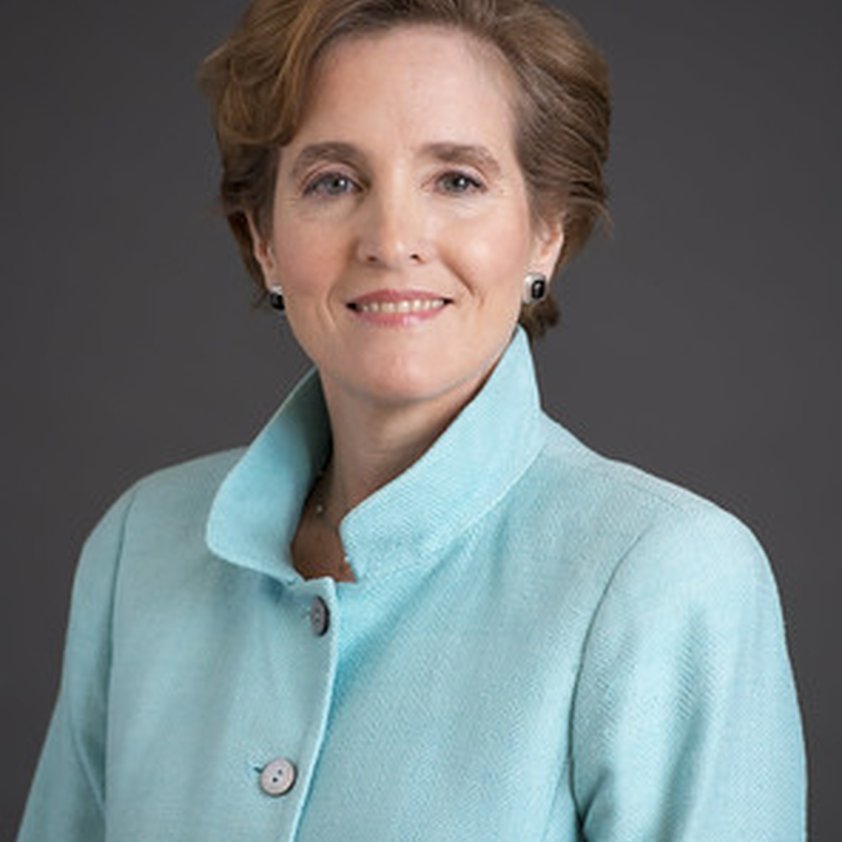
Education is the single best investment a country can make to raise the most pressing challenges of our time. In an interconnected world, an educated population – especially girls – is an insurance policy for every aspect of a country’s future development, with wide-ranging benefits extending to health, economic growth, peace and stability. However, economic pressures brought on by the Covid-19 pandemic are squeezing education budgets around the world, just as investments are needed more than ever before. Sustaining domestic and global education budgets around the world is the key to a shared future fit for our children.
Alice Albright, CEO of Millennium Challenge Corporation
Searching for more in-depth reporting or quick refreshers on the relationship between gender and education? Check out Theirworld’s groundbreaking reports and explainers that examine the issue in further detail.

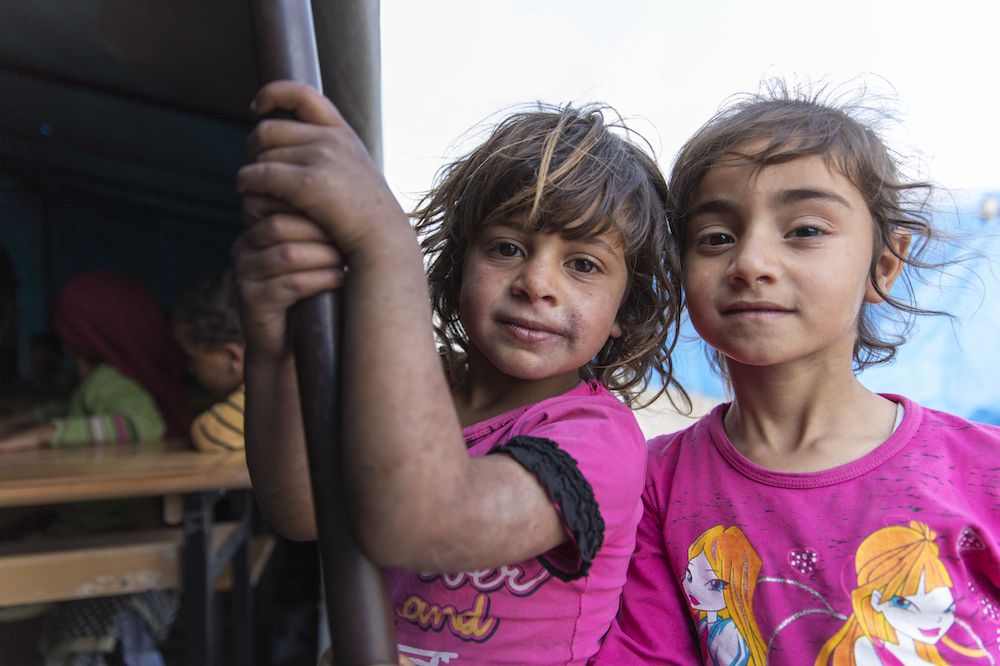
In conflict, natural disasters, and other emergencies, girls face particular vulnerabilities and barriers that can frequently prevent them from realising their right to education. Displacement, poverty and the breakdown of familial and social protection mechanisms can place girls at higher risk of sexual abuse, violence, exploitation and early forced marriage.
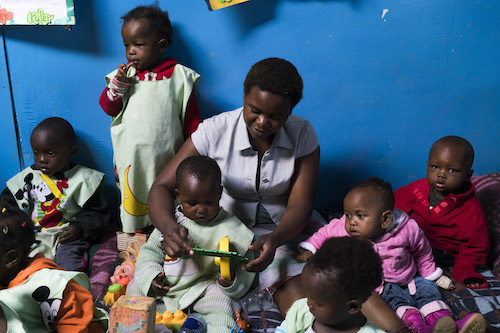
This report offers a snapshot of early childhood development in Africa. This snapshot of equity shows how much more there is to do to ensure every child has the best start in life.
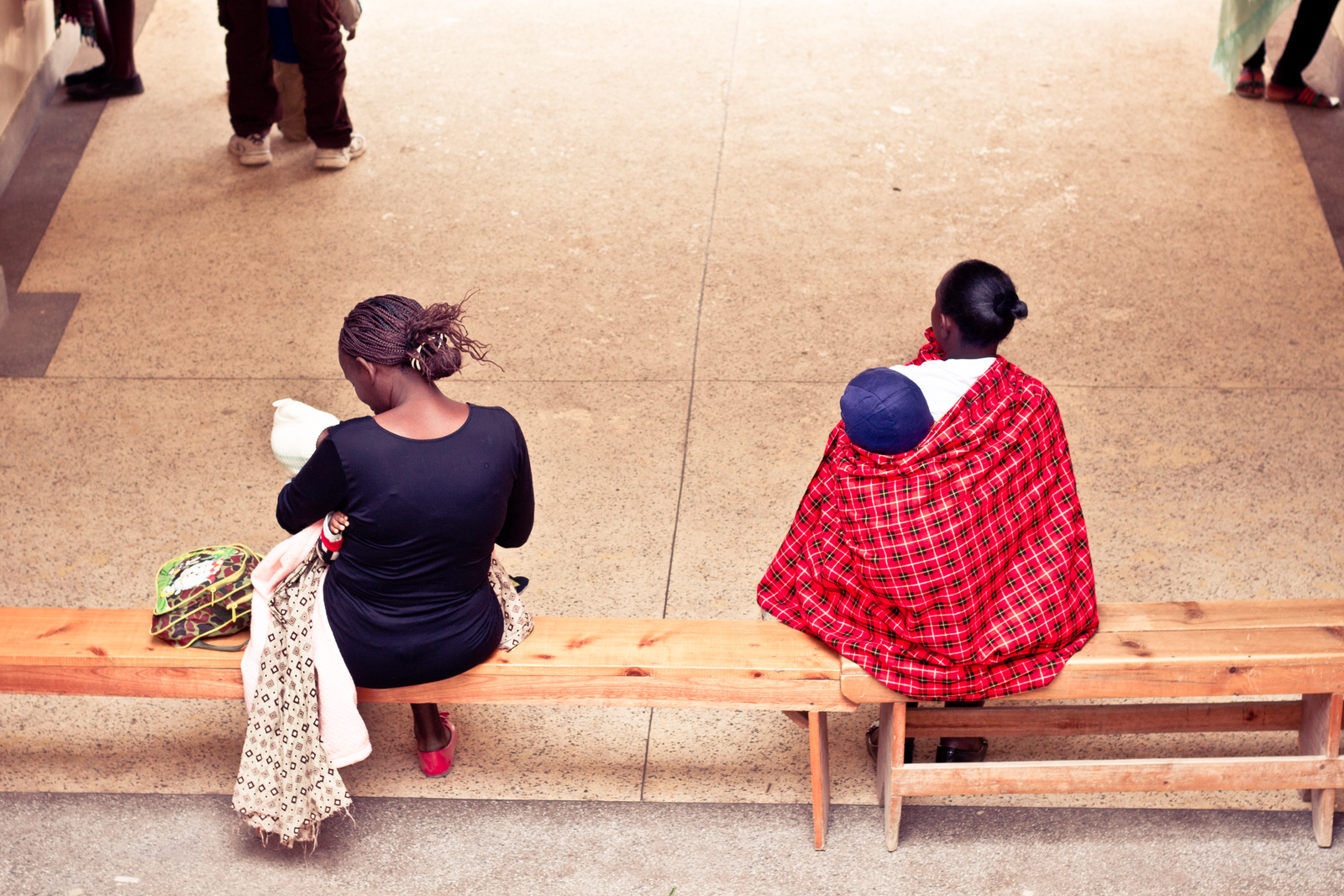
This page is about the issues around pregnancy and childbirth and what can be done to ensure a safe and healthy start in life for all children
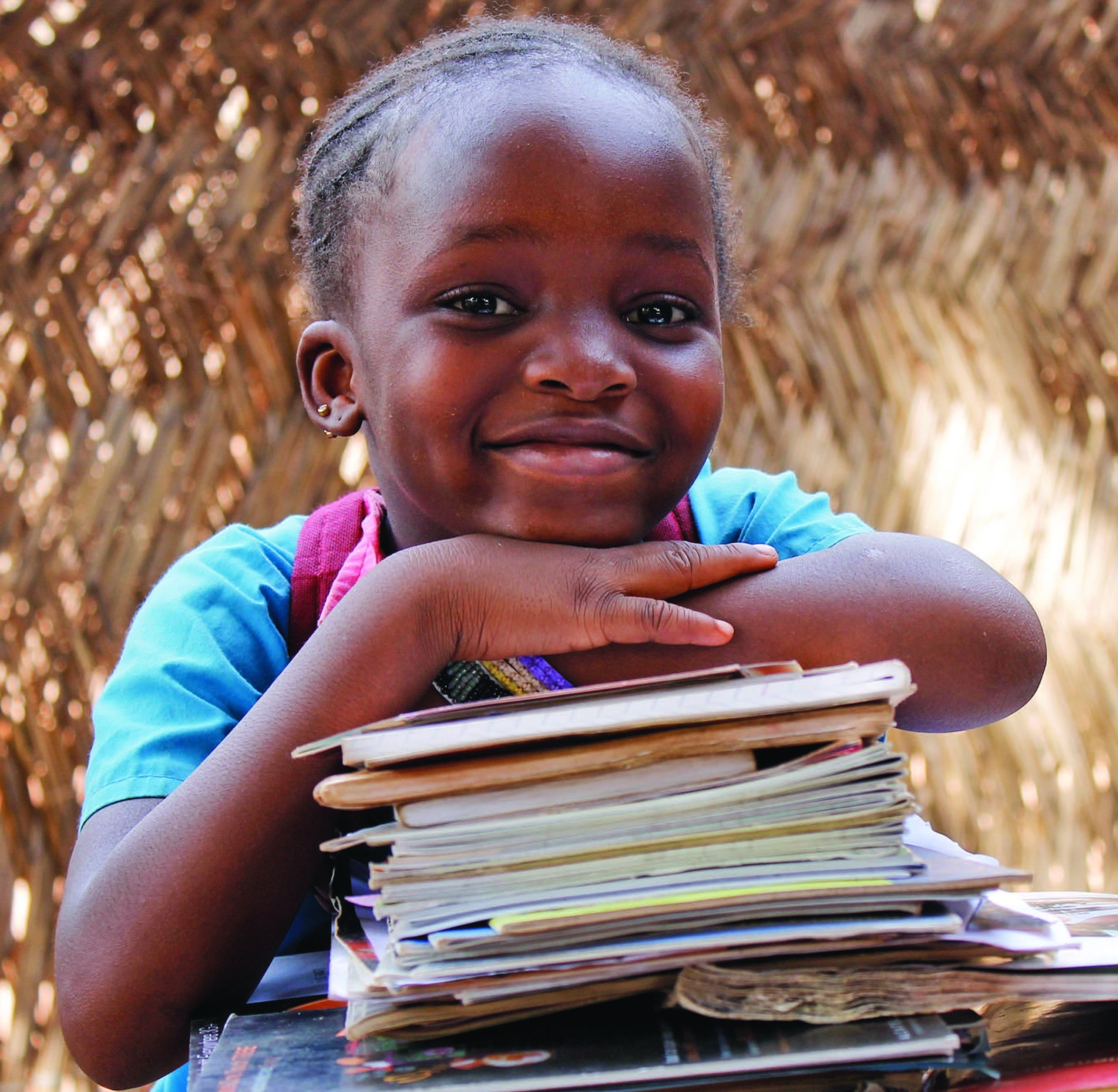
Global Business Coalition for Education
The Journey of a Girl: Opportunities for Business Investment in Girls’ Education
Released on the International Day of the Girl Child, ‘The Journey of a Girl’ shows how businesses must invest at every stage of a girl’s education journey to overcome the many barriers that keep her from reaching her full potential. This working paper, commissioned by GBC-Education, surveyed 32 companies investing in girls’ education, and found that while there is a strong focus on empowering girls in the secondary years, less than 10% of corporate education budgets are directed to pre-primary education.
Prefer an audio medium to better understand the connection between education and gender? Listen to Theirworld’s Better Angels podcasts, featuring stories from globally renowned campaigners, Nobel Prize winners, celebrities, politicians and remarkable young people who are experts in the field.
The Importance of Girls’ Education
In this Better Angels episode focusing on the importance of girls’ education, Sarah Brown talks to an array of inspirational guests including Deputy Secretary-General of the United Nations Amina Mohammed, former Australian Prime Minister and Chair of the Global Partnership for Education Julia Gillard, young education champions Shazia Ramzan and Kainat Riaz, and co-founder of HOPE for Children Cameroon and Theirworld Global Youth Ambassador Joannes Yimbesalu
UN Special #6: Theo Sowa Interview
Theo Sowa, CEO, The African Women’s Development Fund, talks to Sarah Brown about the rampant inequalities around the world which are depriving children of a better future
Hanzade Doğan Boyner and Vuslat Doğan Sabanci: Interview Special
Top Turkish business women Hanzade Dogan Boyner and Vuslat Dogan Sabanci and their efforts to promote girls’ education through private public partnerships are featured in this interview special
Live Special – Theirworld’s International Women’s Day London Event
Live from Theirworld’s International Women’s Day breakfast event in London and hosted by Sarah Brown and U.S. activist and youth skills campaigner Jamira Burley, this Better Angels episode features inspiring women from a variety of sectors joining together to discuss safe schools and how to break down barriers to girls’ education
International Women’s Day 2021 Special #2: Live from Theirworld’s virtual event
In this episode, we hear some highlights from Theirworld’s International Women’s Day event and speak with some of the event’s attendees about girls’ education and gender equality
Theirworld’s commitment to education spans sectors and subjects. See what we are working on at the intersection of education and gender:
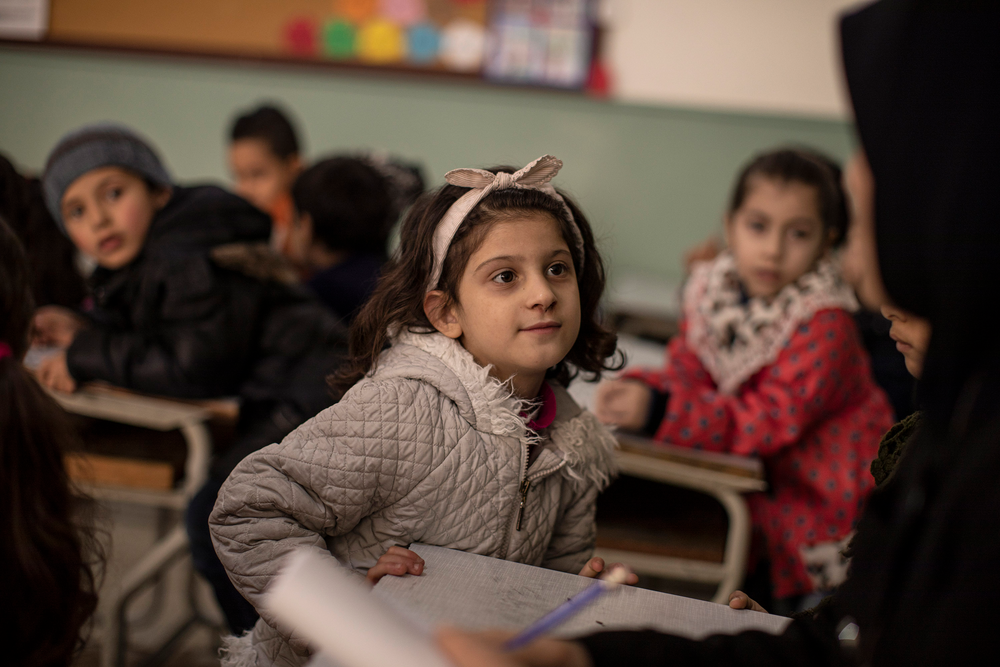
A Safe Place to Learn:
Every child has the right to an education free from fear of discrimination, violence or attack. We work to provide refugees, girls, children with disabilities and other underserved young people with the education they deserve
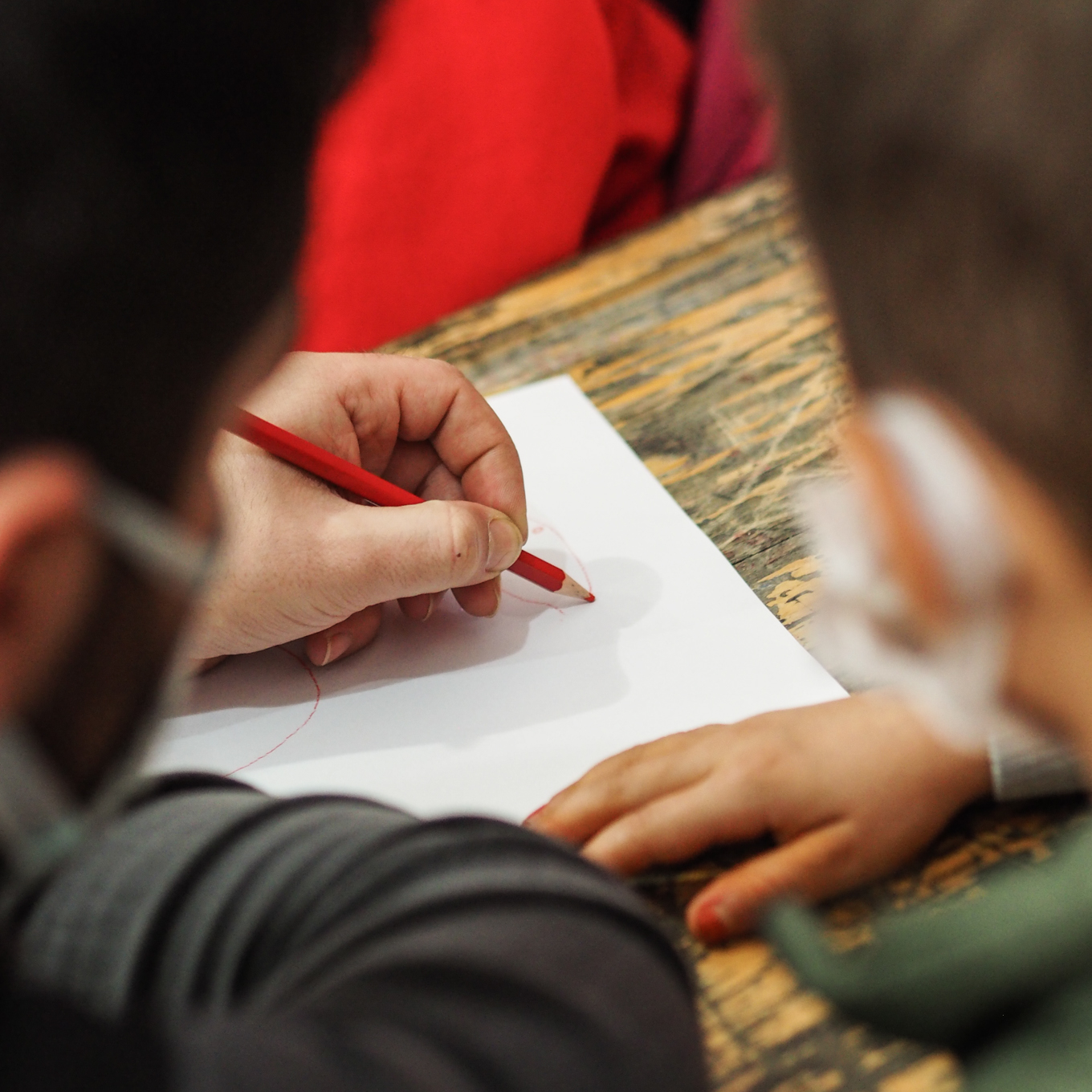
Trauma Informed Schools, Turkey
Theirworld partners with Maya Vakfi in Turkey to deliver a programme which helps students cope with traumatic experiences and gives teachers the skills to understand and address their needs
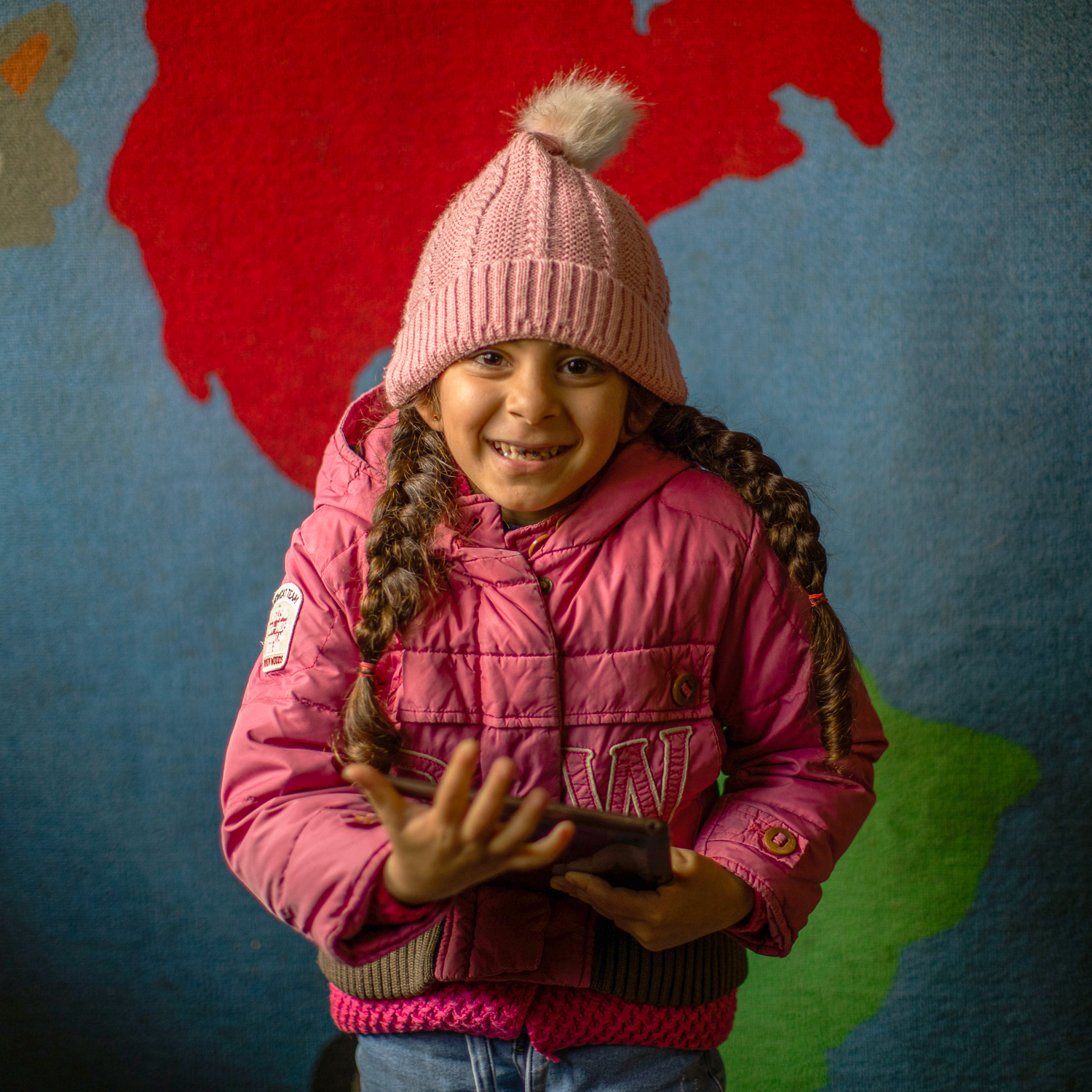
My Best Start, Lebanon
Theirworld works with agencies on the ground in Lebanon to provide children, parents and teachers with tools and resources to provide valuable early childhood education
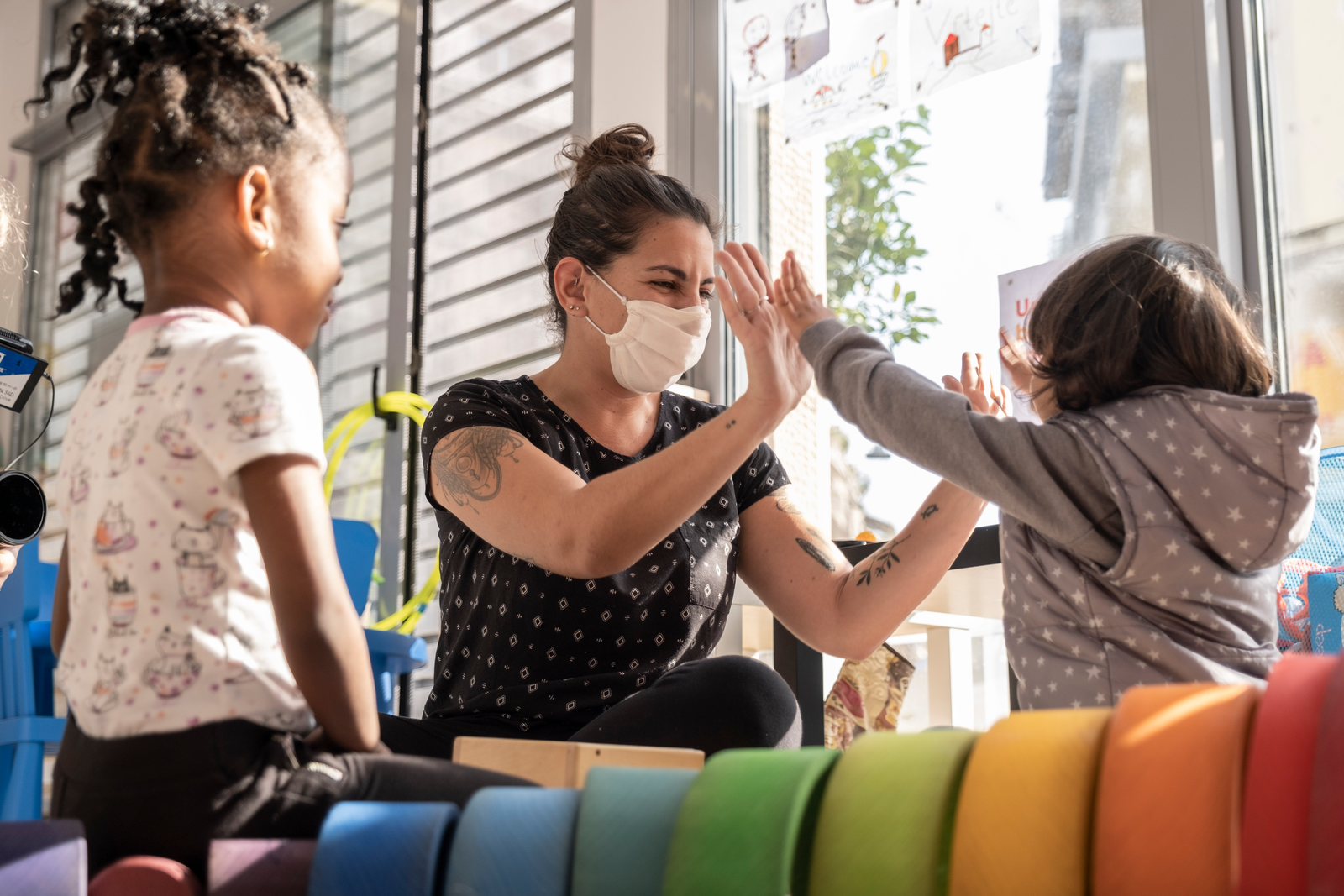
Heal Together, Greece
Theirworld works with the Amna Refugee Healing Network on a sustainable approach to the delivery of early childhood education to refugee children
Take Action. Get Involved.
Theirworld is committed to ending the global education crisis and unleashing the potential of the next generation. Inspired to unlock big change? Support our campaigns, fundraise with us or join our Global Youth Ambassadors programme.
To end the global education crisis we’re going to need everyone to do their part, help build the pressure needed to make change.
Support our campaigns

Our network of 2,000 young people in more than 100 countries across the globe working together to end the global education crisis.
Join the Global Youth Ambassador programme

Raising money for Theirworld is another great way to help us.
